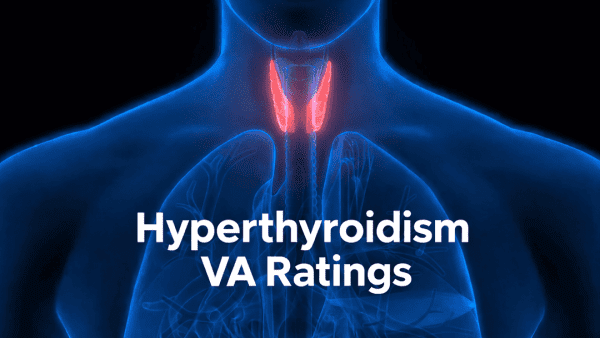Looking for Expert-Level VA Claim Answers?📱Call Us Now! 737-295-2226
If you’re a veteran trying to make sense of your VA disability pay, the VA Disability Pay Chart is your go-to tool—but it’s not as straightforward as it looks.
In this guide, we’ll break it down step-by-step, so you understand exactly how the VA calculates your monthly payments, how dependents impact your VA compensation, and how to make sure you’re getting every dollar you deserve.
Table of Contents
Summary of Key Points
- Annual VA Disability Pay Charts show monthly, tax-free compensation based on your combined VA disability rating—not your individual ratings added together.
- Veterans with a 30% rating or higher may receive additional pay for qualifying dependents, such as a spouse, children, or parents.
- Special rules apply for school-aged children and spouses who need daily care (Aid and Attendance).
- A 0% VA rating results in no monthly pay but may still open the door to future increases or secondary claims.

What is the VA Disability Pay Chart?
The VA Disability Pay Chart shows the monthly tax-free compensation amounts the VA pays based on your Total Combined VA Disability Rating. These amounts are approved annually by Congress, and they’re designed to reflect the average economic impact of your service-connected conditions.
Yes, it’s tax-free—every month, every year.
You can view the official VA pay tables at: VA Disability Compensation Rates
Understanding the VA Rating Percentages
Across the top of the VA Disability Chart, you’ll see percentages ranging from 10% to 100%. These represent your Total Combined VA Disability Rating—not the sum of your individual condition ratings, but a combined score calculated using “VA Math.”
You only receive one total monthly payment based on this combined VA disability rating. You do not get paid separately for each condition.
How Dependents Affect Your Monthly VA Disability Payment
If you have qualifying dependents, you may be entitled to additional monthly compensation. Dependents include:
- Your spouse
- Your children
- Your parents (in some cases)
But here’s the catch: These dependents must be legally recognized and financially dependent on you. That means:
- A spouse must be married to you and financially dependent.
- A parent must live with you or rely entirely on your income.
- A child must be under 18, or 18–23, and enrolled in school full-time.
To claim them, you’ll need to submit these forms:
- VA Form 21P-509 for dependent parents
- VA Form 21-686c for spouse and children
- VA Form 21-674 for school-aged children (18–23)
Special Rules for Children
The VA Disability Chart only includes one child under 18 by default. If you have additional children, you’ll need to add a fixed amount for each one.
There are two categories:
- Children under 18
- Children aged 18–23 in school
Here’s a quick example:
Example: Bill has one child, age 22, enrolled in college full-time. He has no spouse or other dependents. Bill’s VA rating is 30%.
First, Bill finds the base rate for a single veteran at 30%: $537.42.
Then, he adds the amount for one school-aged child (18–23): $102.00.
Bill’s total monthly payment = $639.42.
Aid and Attendance for Spouses
If your spouse needs daily support due to a medical condition, you may qualify for extra compensation under Aid and Attendance.
This applies if your spouse needs help with Activities of Daily Living (ADLs) like bathing, dressing, or eating. However, if they’re hospitalized or institutionalized, they typically don’t qualify.
Example: Betty has a 40% rating. Her husband, Bert, qualifies for Aid and Attendance.
- Base amount for 40% + spouse: $859.16
- Add Aid and Attendance: $78.00
- Total monthly benefit = $937.16
Learn more here: Aid and Attendance Information
10% and 20% VA Ratings Don’t Include Additional Compensation for Dependents
If you have a 10% or 20% VA rating, dependents do not increase your monthly payment.
Only veterans with a 30% VA rating or higher receive extra pay for qualifying dependents.
0% VA Rating
A 0% rating means the VA acknowledges your condition is service-connected, but they don’t consider it disabling enough to warrant VA compensation.
Still, it’s important—you may be eligible for increased ratings in the future if your condition worsens, and it helps build your medical record. It may also open the door for secondary service connection if that condition causes another VA ratable condition.
Related: 10 Easiest Secondary VA Claims to Win
Conclusion
Understanding your VA disability pay goes beyond reading a chart. With the right knowledge, you can make sure you’re not leaving money on the table—especially if you have dependents, qualify for additional benefits like Aid and Attendance, or deserve a higher rating. Use this guide as a reliable reference any time you have questions about how your VA disability pay is calculated and what affects your monthly compensation.
About VA Claims Insider

- VA Claims Insider is the #1 most trusted name in VA disability claims.
- Work directly with a VA claims coach who can educate you throughout the claims process.
- 25,000+ disabled veterans have served in our membership programs since 2016.
- 30% average rating increase for veterans who complete our #1-rated Elite program.
- 4.7/5.0 average rating out of 5,500+ total reviews; over 4,500 5-star reviews.
FAQs | Frequently Asked Questions
What is a VA Disability Pay Chart?
It’s the pay scale Congress approves each year, outlining how much veterans receive monthly based on their combined VA disability rating.
How are VA compensation rates determined?
VA disability compensation rates are designed to offset the average loss of income from a veteran’s disability. Higher VA ratings reflect more severe conditions and greater impact on daily life.
Do my dependents qualify for VA disability pay?
Not directly, but if they are financially dependent on you, they can increase your monthly VA payments.
How do I find out my current VA disability rating?
You can find your current VA disability rating by logging in to your account at VA.gov. After logging in, navigate to the “Disability” section on your homepage dashboard to view your combined disability rating and a breakdown of each service-connected condition. This page also provides access to past decision letters and explains how your ratings were determined. If you prefer, you can also call the VA at 800-827-1000 or visit your local VA regional office to request this information.
How do I apply for VA disability compensation?
File a claim online, by mail, through a VSO, or with outside support. You’ll need medical records (including a current medical diagnosis) and proof of service connection (via credible medical nexus).
How long does it take to get VA benefits?
If your claim is approved at a 10% VA rating or higher, you should get your first payment within 15 days. Note: New claims take around 3–6 months to process. As of June 2025, the average time to receive a decision on a claim is 107.4 days.
How does the VA assign ratings?
The VA uses the VASRD (Schedule for Rating Disabilities) to determine the severity of your condition and assign a percentage.
How can I increase my monthly VA disability payment?
To increase your monthly VA disability payment, you can file a claim for a higher rating if your condition has worsened, submit a secondary claim if a new condition is caused or aggravated by your current service-connected disability, or appeal a past decision if you believe you were underrated. If your service-connected conditions prevent you from working, you may also qualify for Total Disability based on Individual Unemployability (TDIU), which pays at the 100% disability rate. Learn the 6 Best Ways to Get a VA Rating Increase.
Author

Eric Webb
Eric has written and worked in the field of Veterans Disability since 2020 and enjoys writing educational content for the veteran population. His prior work has been published in the Official Journal of the American College of Sports Medicine (ACSM). He holds a Degree in Health and Exercise Science.



